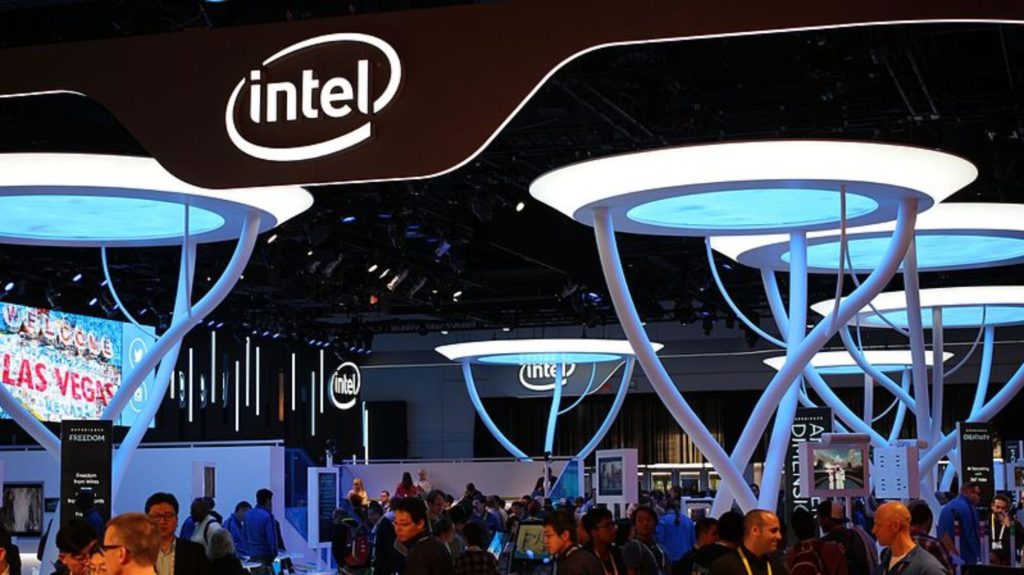This market research report was originally published at Yole Développement’s website. It is reprinted here with the permission of Yole Développement.
Yole Développement (Yole) has been monitoring the trajectories of Advanced Driver Assist (ADAS) and Autonomous Vehicle (AV) players for many years and has recently published Sensing and computing for ADAS 2020 and Sensors for robotic mobility 2020.
The yearly presentation from Amnon Shashua – Intel Corporation SVP and Intel Mobileye CEO – at CES is a major event we make sure to analyze comprehensively.

CES 2021 – Source: https://digital.ces.tech/home, 2021
While in previous years this was limited in scope to automotive, this year this presentation went way further as it gives an indication of the future of Intel.
10 years ago, Intel was the undisputed leader in semiconductors, making about $50B when the closest competitor Samsung was just breaking the $10B landmark. This year Samsung and TSMC showed their strength in being able to mass produce at the 5nm node when Intel was again postponing mass production of 7nm. While it is still in a leadership position with $75B in revenue, the competition is closing in and it is well accepted that by 2025 they might lose the semiconductor crown. Being focused on the PC and Server market fueled by the “More Moore” logic, is no longer the magic recipe for growth. Competing with a broader technology portfolio, Samsung combines several strengths such as computing, memory and image sensors while serving Mobile and IoT, and is generating double the growth rate of Intel.

The future is therefore a combination of “More Moore” and “More than Moore”. Intel may have understood 5 years ago that even though it failed to catch the smartphone wave it could go after the next ones, the robotic revolution and autonomous vehicles, in particular. It acquired the Israeli startup Mobileye for the insane price of $15.3B. In 2020 Intel Mobileye will have surpassed the $1B landmark, a tiny 1.5% of Intel’s global revenues, but still a 10% YoY growth in the context of global automotive markets shrinking at -20% YoY. From the presentation by Amnon Shashua this year at CES, we understand growth is not yet stalling and Intel Mobileye is ready to sell products with ASPs two order of magnitude higher. Mr. Shashua is indeed aiming at building a $100B business.

The key-take away from Mr. Shashua’s talk is that instead of telling us how his next computing platform will get to the peta operations per second (Pops) level, he told us Intel Mobileye will invest in 4D radar and FMCW lidar. Intel Mobileye is indeed pivoting from “More Moore” to “More than Moore”. Yole has been actively looking into radar technology across different segments and applications as reported in various past reports. In Status of the Radar industry: Players, Applications and Technology Trends 2020 we warn about the dawn of imaging radar and Intel’s Mobileye move is a confirmation. Yole has also been tracking Si Photonics for more than 10 years where our latest report is Silicon Photonics 2020. So far, Si Photonics has mostly been used for datacom optical transceivers. This platform can be used for so much more, however, such as sensing or computing. Intel is the market leader in Si Photonics-based transceivers and converting this strength into lidar shows another interesting step forward in the diversification of this technology.
One thing is certain: the semiconductor industry is in full disruption mode. To survive, the mega corporations such as Intel have to master the theory from Clayton Christensen, the late Harvard professor that passed away in 2020. It will take 10 more years for the story to unravel and the odds of success are very slim. Nevertheless, the effort is admirable, and it is hoped the next CEO of Intel will help consolidate this surprising move.
At Yole, we will make sure to keep you posted.
Pierre Cambou
Principal Analyst, Photonic and Display Division, Yole Développement


